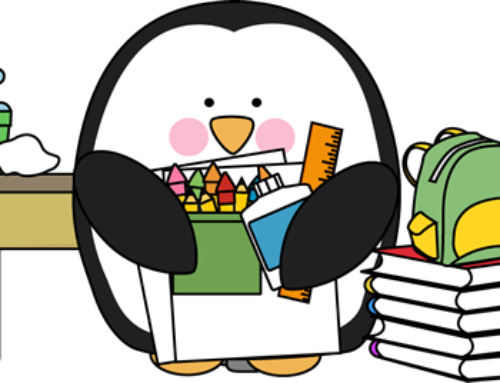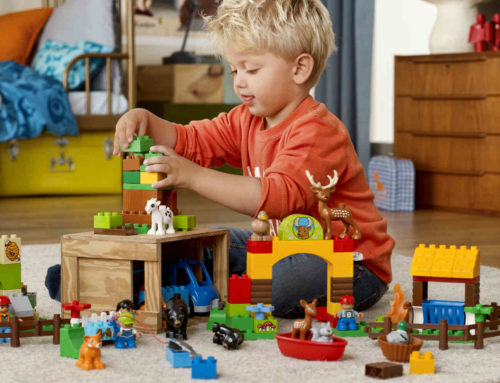
Asking and answering questions is a big part of normal, everyday life. Most of us wouldn’t think twice when we ask, “What did you do at school today?” or “Where did you put my keys!?”. However, not all questions are created equal.
We are all familiar with the who, what, where, when, why range of questions, however what many people don’t realise is that some questions are easier to answer because they require a direct recall of facts. On the other hand, some questions are more difficult to answer because they require independent thinking, consideration and an ability to make judgments.
Asking questions can be a great way to start and continue a conversation or interaction, to gather information and to check if something has been understood. However, if we ask too many questions or questions that are too difficult, they can actually make children feel pressured and turn into conversation stoppers!
The types of questions you ask is important to consider too, because it can change the quality of the information you get back. If you are asking your child questions that are too easy, they may be missing out on the opportunity to practice some higher order language skills due to not being challenged enough.
So how do we know where to start?
In the world of speech pathology, a widely used model of questioning centres around Marion Blank’s work on “Levels of Questioning” (Blank, Rose and Berlin 1978 – it’s an oldie but a goodie!). This model looks at the progression from understanding and answering concrete questions about the here and now, and moves towards more abstract questions.
Questions are split into 4 levels with an approximate age range given to each level. Keep in mind that all children are different and have their own individual strengths and weaknesses. As a result, there are some 3 year olds who can answer some level 3 and 4 questions and some 5 year olds who continue to struggle with level 1 and 2 types.
Question Levels
Level 1 (2-3 year olds)
These are the easiest types of questions to answer. They are direct and relate to the immediate environment. The response can be a single word or even a non-verbal response such as nodding or shaking your head. For example:
- What is that?
- What can you see?
- Find one like this.
- What is _____ doing?
- Is it a ______ ? (yes/no response)
Level 2 (3-4 year olds)
These questions are a bit more difficult because they involve some analysis, such as classifying/grouping objects or describing and understanding object functions. For example:
- Find something that can ____ (cut).
- What is happening in this picture?
- Where is the ____? (requires a location response e.g. “on the table”, not just pointing)
- Find something that is ____ (red) and ____ (spikey).
- How are these different?
- Which one is ____ (a fruit)?
Level 3 (4-5 year olds)
These questions are harder still because you need to use your own knowledge to make basic predictions, assume the role of another or make generalisations. Children are starting to use higher-order thinking skills at this level. For example:
- What will happen next?
- How do you think he feels?
- How do I make ____ (a sandwich)?
- How are these the same?
- What is a ____? (definitions)
Level 4 (5+ years)
These are the most abstract and difficult kinds of questions to answer. This level requires knowledge and understanding of the past and future, the ability to reason, to recognise and explain cause and effect relationships, negotiate, problem solve, predict outcomes, create solutions and evaluate. For example:
- What will happen if ____?
- What should we do now?
- How did that happen?
- Why can’t we eat ice cream with a knife and fork?
- How can we tell he is sad?
Putting it into practice…
Once you have an awareness of the complexity of questions, you can start to reflect on and possibly change the way you ask things to best suit your child. If you ask your child a question that they cannot or do not answer appropriately, instead of giving them the answer you can simplify the question and try again. Similarly if you find yourself asking your child simple questions most of the time, you may start to ask more abstract ones to challenge them a bit more.
Let’s take the classic “The very hungry caterpillar” by Eric Carle as an example.
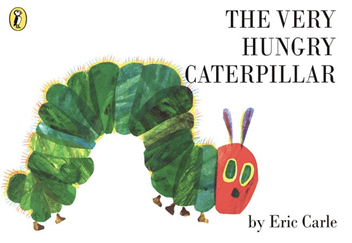
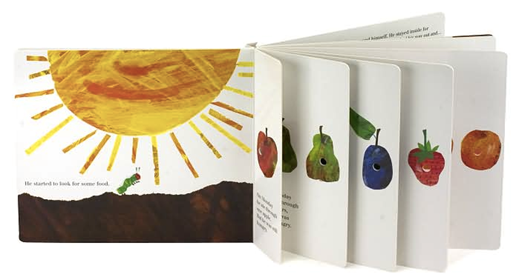
Reading this with a 2 -3 year old you may ask level 1 questions like…
“What is that?” (while pointing to the orange) or “What did the caterpillar eat?”.
If these questions are too hard you might simplify them by asking level 1 questions that do not require a verbal response, e.g. “Where is the orange?” (child can answer by pointing) or “Is that a banana? (child can nod or shake head for yes/no response).
If these questions are too easy you may make it harder by asking level 2 questions, e.g. “Which one do we squeeze in the morning to make juice?”
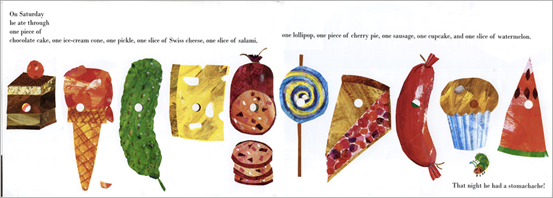
Reading this page with a 3-4 year old you may ask level 2 questions like…
“Can you find the one that melts?” or “How are ice-cream and sausages different?” (sausages are dinner and ice-cream is dessert/ ice-cream is cold and sausages are hot etc)
If this is too hard you may simplify it to, level 1 questions e.g., “Where do we keep our ice-cream?”
If this is too easy you may increase difficulty by asking level 3 questions e.g. “How are ice-creams and lollypops the same?” (they are both treats/we lick them/ etc)

Reading this page with a 4-5 year old you may ask level 3 questions such as…
“What is a cocoon?” or “What do you think the caterpillar will do next?”
If this is too difficult you could simplify to level 2 questions e.g. “Where is the caterpillar going?”
If this is too easy you could challenge the child with level 4 questions, e.g. “Why is the caterpillar building a cocoon?” or “How did the caterpillar get so big?”.

Reading with a 5+ year old child you may ask level 4 questions such as…
“What has happened to the caterpillar?” or “Now that he is a butterfly what will he have to do differently?”
If this is too challenging you might simplify by asking level 3 questions, e.g. “How do you think the butterfly feels?”.
If a child answers these questions easily you may challenge them with even harder level 4 questions that draw on their own knowledge about the world, e.g., “Can you think of any other creatures that have a transformation like a caterpillar/butterfly?”.
Don’t forget…
Whilst questions are a great way to encourage speech and language development they should not be the only way you interact with your child. Too many questions can make a child feel like they are being tested. This makes communicating with you more of a chore than a pleasure.
Instead of just using questions, try to make comments and statements as well to show your child that you are interested. For example, “Oh look- the butterfly has antennae! ” or “Strawberries are my favourite type of fruit”.
Remember to let your child lead as much as possible to ensure that you are giving them the information they want to learn, not just what you think they need to learn. For example, if you are looking at the page with the pictures of cake, ice-cream, lollypops etc and they start talking about a birthday party continue that topic of conversation and see where it leads. Communication is meant to be fun – enjoy it!

